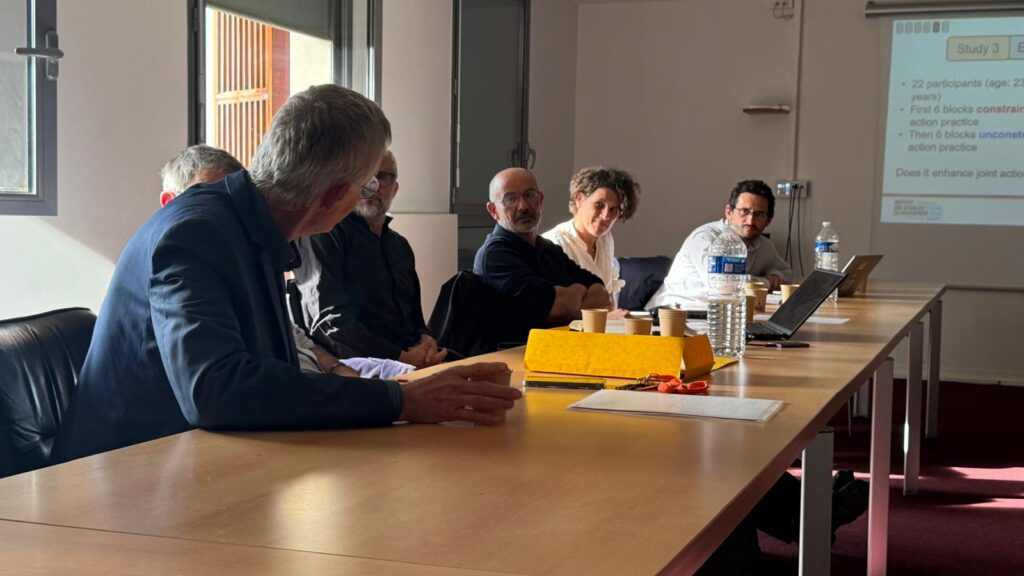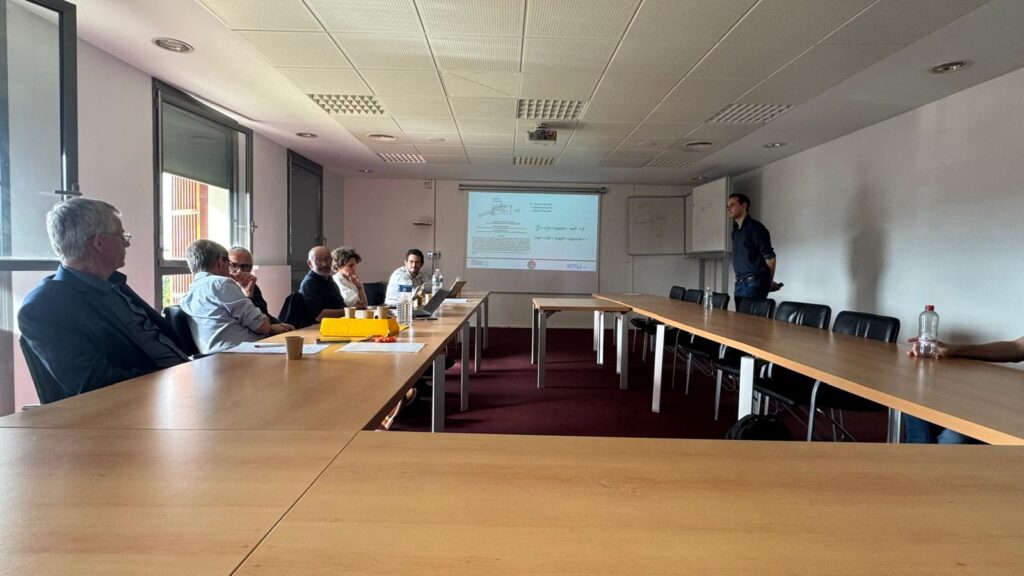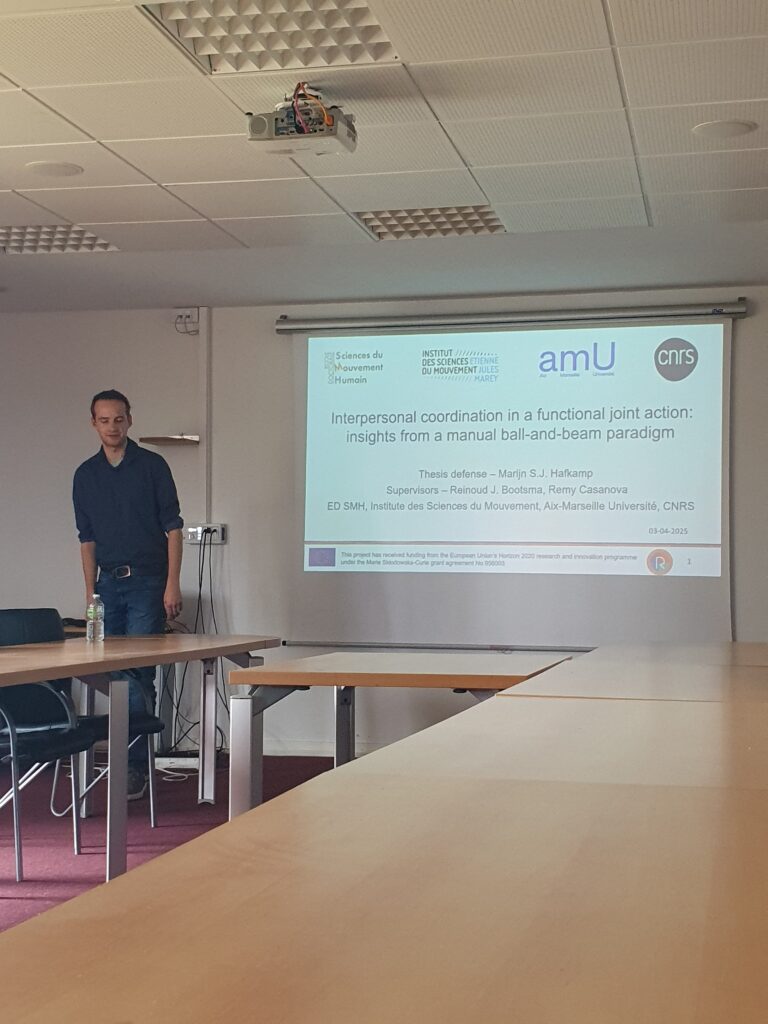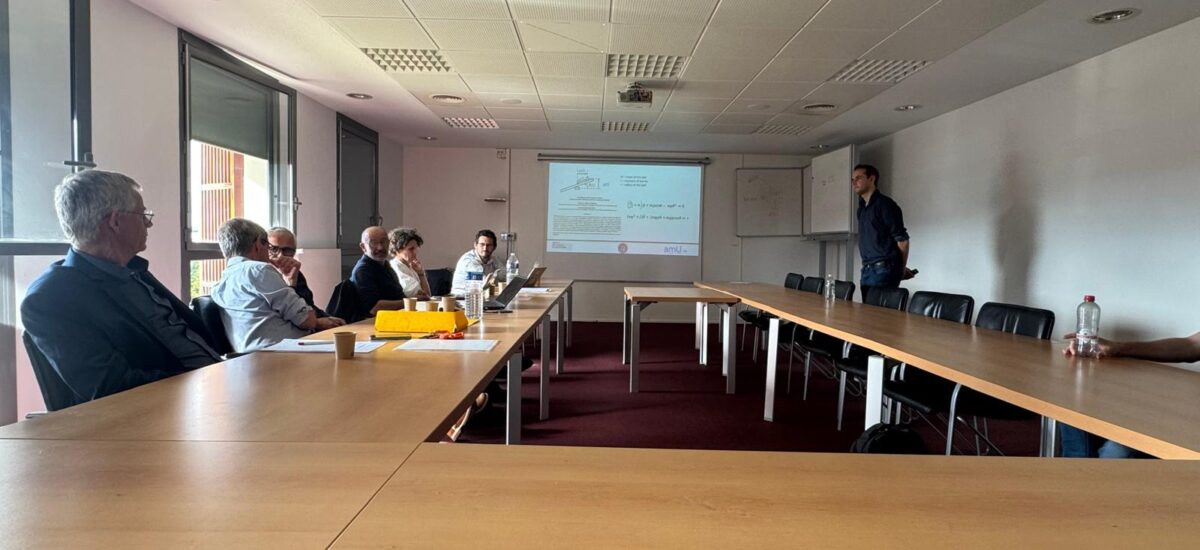On April 3rd, our ESR11, Marijn Hafkamp, successfully defended his PhD thesis at AMU entitled : “Interpersonal coordination in a functional join action: Insights from a manual ball-and-beam paradigm”.
Congratulations Marijn for the amazing job!
Abstract: In this thesis we investigated the interpersonal coordination of movement behavior in the context of a functional, that is, a goal-directed joint action. To do so, we developed a new experimental paradigm in which participants had to control a ball rolling on a long and hand-held beam. By continuously adjusting the inclination angle of the beam, they were to roll the ball reciprocally between two targets, with the goal to hit these targets as often as possible during a trial. This ball-and-beam task could be performed individually, in solo action, as well as dyadically, in joint action. Overt communication was precluded in all settings. In a series of three experiments, we showed that the mode of interpersonal coordination in joint action was qualitatively dependent on the task experience of dyad members in solo action. Results showed that unexperienced dyads adopted a sequential mode of interpersonal coordination, while experienced dyads opted for a more successful, simultaneous mode of coordination. Building upon this finding, we developed a novel methodology to assess the transfer of skill from solo action to joint action. We found that those performance characteristics that were somehow related to ball speed were strongly propagated from the solo to the joint action, while the characteristics related to ball accuracy and beam consistency were only moderately transferred. Also, the dyad members that produced a higher ball speed in solo action were more likely to take the lead in the interaction. From this we concluded that the stability of the interpersonal coordination emerged from the dyads’ interaction, while being constrained by the task goal to bring the ball up to speed. More generally, our results demonstrated that an ecological account of joint action needs to address not only the stability, but also the functionality of the interpersonal coordination.



